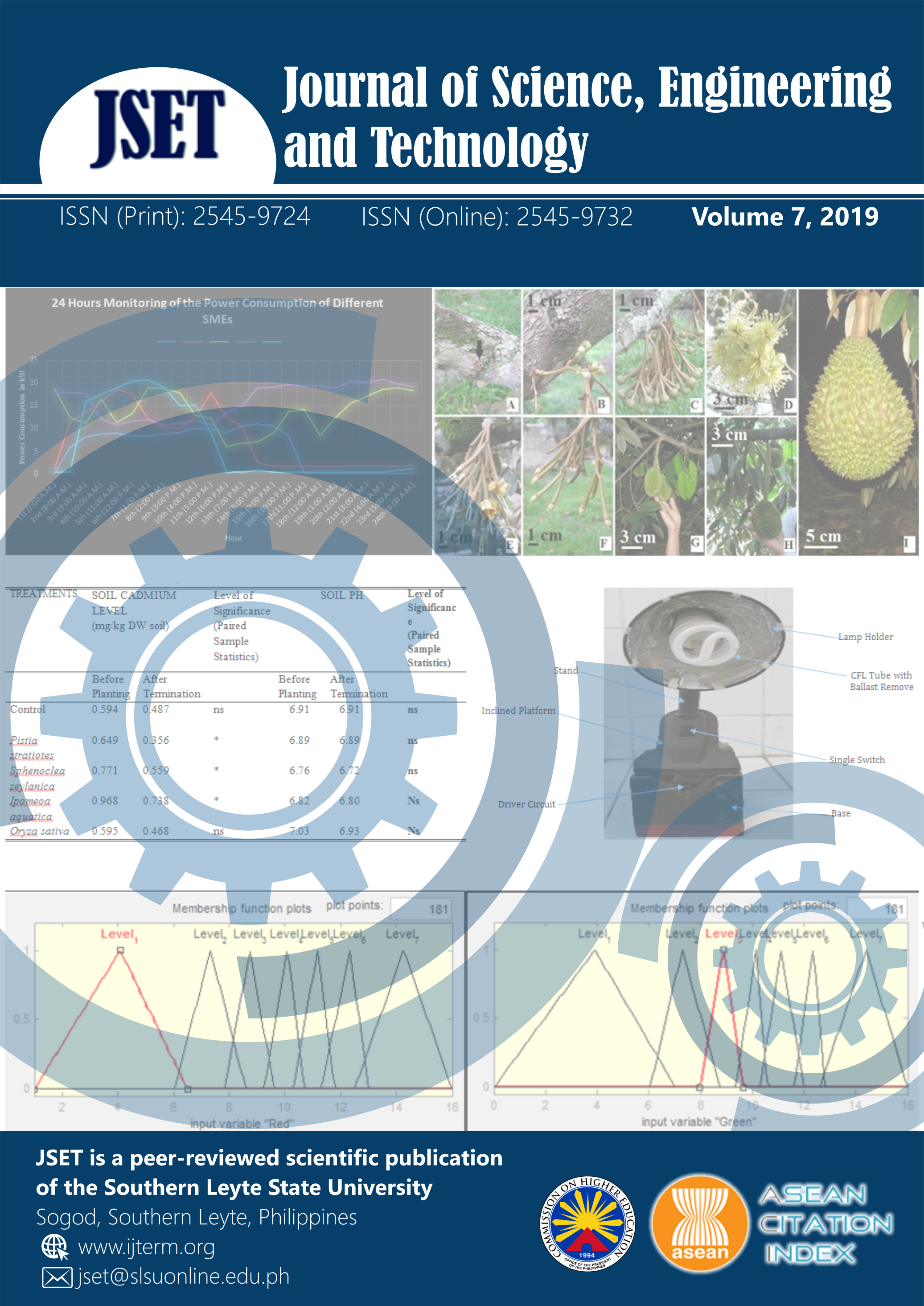Potentials of Aquatic Weeds (Ipomoea aquatica, Sphenoclea zeylanica, Pistia stratiotes) for Cadmium Phytoremediation
DOI:
https://doi.org/10.61569/byhcet86Keywords:
Phytoextraction, Weeds, Heavy metal contamination, Soil remediationAbstract
Cadmium (Cd), a toxic heavy metal is a common contaminant in rice paddy soil. Phytoremediation is seen as one of the cheaper methods of removing heavy metals from contaminated soil. This research was designed to test the efficacy of three weed species (Ipomoea aquatica L, Sphenoclea zeylanica Schmidt and Pistia stratiotes L.) associated with low-land rice (Oryza sativa L.) to extract Cd from a rice paddy soil near two industrial establishments in a rural area in the Philippines. Levels of initial and final Cadmium content of the soil were analyzed. Soil pH, and moisture, as well as the Cd content of the plants were also compared after harvest. The tested weed species significantly reduced the soil Cd level compared to rice and the negative control, suggesting the potential of these weeds in extracting Cd from the soil. Among the three weeds, Pistia stratiotes had the highest total cadmium concentration level followed by Ipomeoa aquatica, and Sphenoclea zeylanica, while rice had the lowest concentration. These weeds then can be used for the phytoremediation of Cd-contaminated soil.
Downloads
Published
Issue
Section
License

This work is licensed under a Creative Commons Attribution 4.0 International License.
This is an open access article distributed in accordance with the Creative Commons Attribution 4.0 Unported (CC BY 4.0) license, which permits others to copy, redistribute, remix, transform and build upon this work for any purpose, provided the original work is properly cited, a link to the license is given, and indication of whether changes were made. See: Creative Commons Attributions 4.0 International License.








